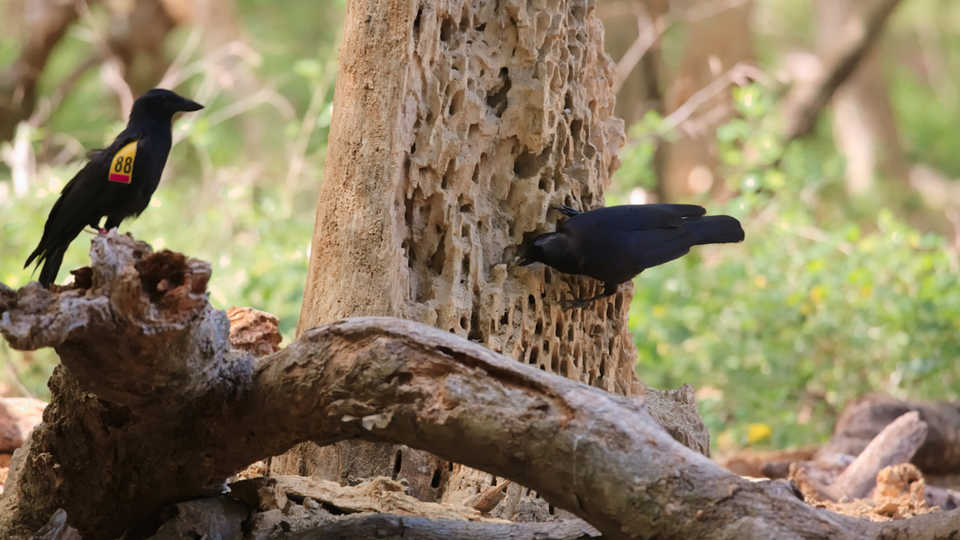Science News
Spreading Crow Intelligence

As we’ve written here before, crows are very intelligent animals, but how is their knowledge passed from bird to bird? Hoping to catch a glimpse of this, a team of scientists set up several intensive experiments with New Caledonian crows (Corvus moneduloides) to map how information spread from pairs and families of the birds to neighbors and communities in the wild. The research is published today in Nature Communications.
New Caledonian crows create and utilize tools, using natural items such as small twigs and branches to probe holes in tree bark for their insect prey. These skills are thought to be passed to other observing crows through social learning, but this transmission likely depends on the structure of social interactions within a group.
A team of researchers, led by James St Clair of the University of Oxford, tagged 33 wild crows to find out how they might spread the news of food abundance and how widely they would be willing to pass around that information. The team also created a food glut: a “tree-fall” of decaying candlenut trees that hold highly nutritious, yet hard to reach, larvae of longhorn beetles (Agrianome fairmairei).
In general, the scientists found that crows mostly cavorted within pairs or small families. However, the team discovered that abundant food—available only through tool-use—was widely communicated within a community and shared beyond families, throughout the entire population. This sharing of the wealth came as a surprise to the researchers, in part because it contrasts with previous studies of wild crows. Instead, the researchers draw parallels to primate behavior: “In primate societies, similarly ‘egalitarian’ social context of tool-assisted foraging provides abundant opportunities for social learning, through observation, co-action or interaction with freshly discarded tools and is thought to be key to maintaining and accumulating cultural information.”
While the team didn’t see the news transmit from one community to another, they believe that a “between-community information flow is likely to occur over disproportionately slow timescales…” (They only observed the crows over a period of 19 days.) The scientists suggest that this flexibility of crow social networks (this sharing of information within the family, the community, and potentially beyond) could facilitate the spread of cultural traits such as tool-use.
Image: Jolyon Troscianko